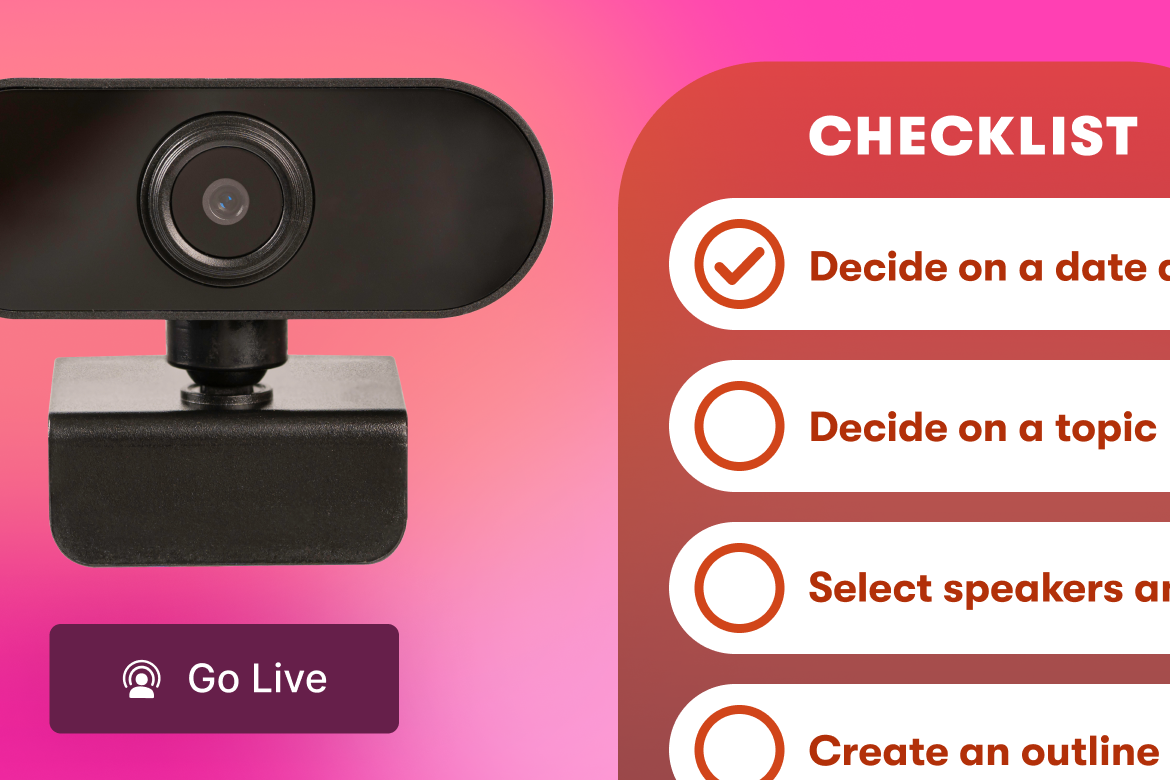Get Your Next Idea for a Video Series Approved with a Proof of Concept
February 11, 2020
Topic tags
If you’re ready to go all-in on creating binge-worthy content but still need to convince some key stakeholders your show concept is worth the investment, you may want to create a test episode for your next pitch.
In order to understand what goes into making a proof of concept for your series, we sat down with Sydney Rutman, Wistia’s very own Producer, to learn what it takes to make one and what your team can learn from investing some time and energy into this part of the show creation process. If you’re in an even earlier stage of the convincing process, don’t sweat it! You can learn how to get your boss on board with Brand Affinity Marketing in this post.
Pilot episode vs. proof of concept
Is a pilot episode the same thing as a proof of concept? Great question! With a background in production for television, Sydney explained that there are some big differences between a pilot episode and a proof of concept.
For television, pilot episodes are used to test an audience’s level of attraction and interest in a show. Typically, they are the full episode length, 22–46 minutes minutes long. When it comes to creating a series for your business, however, Sydney recommends not worrying too much about making something close to perfect like you would for TV — this is where your “proof of concept” comes into play.
When it comes to making binge-worthy content like a video series or a podcast, a proof of concept is simply a rough episode or test that you create with the goal of determining whether an idea can be turned into a reality. In other words, the point of making a proof of concept is to just test out anything your team may be having doubts about at the moment.
“The point of making a proof of concept is to simply test out anything your team may be having doubts about at the moment.”
For example, if you think you have a great creative idea but aren’t sure how it’ll actually play out on-screen, creating a proof of concept can help you figure out whether or not your idea has legs. Businesses should keep in mind that your proof of concept can be as long or as short as you need on a case-by-case basis.
Proof of concepts can also be used as chemistry tests. If you’re shooting an interview-style show for the first time (especially with non-actors), you can shoot a proof of concept video to see if the chemistry between your host and potential guests feels good. This is actually precisely what we did for our latest original series, Low Views High Impact. Before we were completely sure we wanted to produce this series, we shot several test episodes with our show host Kristen Bryant and some of our own Wistians. As a bonus, these proofs came in handy when we wanted to invite folks from companies like BambooHR, Zendesk, Pixability, and more to be on the show.
Now, these are only two examples of what your team can test, but you can truly try out anything you want if you have the resources and time to do so. According to Sydney, “The best thing you could find out from a proof of concept is that something doesn’t work before you go ahead and invest a lot of your budget and time.”
The benefits of testing out your show concept
Besides understanding if your idea is worth your company’s resources and time, a proof of concept prepares your team for when you want to shoot an actual show. During this process, you can figure out your limitations, strengths, and weaknesses, and assess if hiring an external agency, contractors, or even a new full-time team member might make things more efficient.
“Besides understanding if your idea is worth your company’s resources and time, a proof of concept prepares your team for when you want to shoot an actual show.”
For Low Views High Impact, our video team quickly realized they didn’t have the bandwidth to tackle all of the pre-production work that this interview-style format required, like sourcing our beloved featured guests. At the time, we didn’t have a Producer on our team yet, so members of our content team took on those responsibilities to help out. Creating a proof of concept episode for Low Views High Impact showed us where we had gaps in knowledge about producing a binge-worthy series and why filling a Producer role would be hugely beneficial for our Brand Affinity Marketing strategy in the long-run.
What goes into making a proof of concept
Creating a proof of concept might sound daunting, but Sydney reiterated the fact that you really don’t need to shoot a “perfect” episode of your show in order to learn a lot from the experience. As we mentioned before, the amount of time and energy your business puts into a proof of concept varies. But at the end of the day, one thing is true — no one ever wants to dig too deep into their pockets in order to just test something out that might be a bad idea after all. Here at Wistia, we’ve avoided that by featuring our video team or other members of the company in the proof of concept. By doing so, we’re able to test out concepts on a whim and see the results really quickly.
If you don’t have many internal resources to work with, you can also outline your show with a storyboard to help you visualize what the show will look like in reality. A storyboard will serve as your guide for what’s happening in each and every shot, which will help you build out your story and make your idea come to life in a more visual way for stakeholders.
“If you don’t have many internal resources to work with, you can also outline your show with a storyboard to help you visualize what the show will look like in reality.”
When a proof of concept might not be worth it
While testing has its benefits, sometimes it isn’t always necessary. If you know for sure your idea is viable, proving out your concept might be more expensive than just taking the risk and diving straight into production. You might be wondering, “How do I know if something works?” Well, if your idea or format is an iteration of something that’s already been done before, you can use the original piece of content to support your case for getting your series idea approved.
Start putting your ideas to the test
For any business that’s trying to prove to stakeholders they should invest in creating a binge-worthy content, we hope you’ll find value in testing out your show with a proof of concept. If something really isn’t working, don’t let that get you down! In fact, that’s the very best way for your entire team to learn and grow from this process — and ultimately, make better content. Learn from what works and what doesn’t, and then get back on your horse and give it another try!






